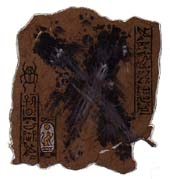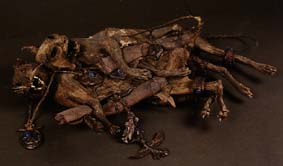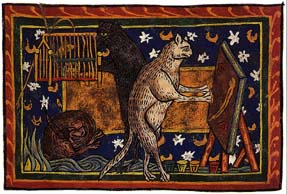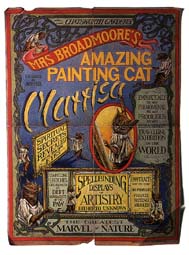| The
discovery in 1990 of the c.3000 BC Aperia Cats, Etak and Tikk, with
their painted scrolls, was the first conclusive evidence that cat-marking
behavior was known and valued by the ancient Egyptians. The unravelled
scroll (right) shows clearly visible paw marks. |
 |
 |
|

This mediaeval bestiary
illustration demonstrates the existence of 'painting' by cats in
the Middle Ages. Because cats were regarded as agents of the devil
during this period, they are depicted here as evil alchemists about
to transmute the caged bird and sleeping dog, prey and enemy of
the cat, into gold.
On Loan from Bodhead Library, Oxford.
|
 |
Cat-marking
behavior was trivialized in Victorian times, as this poster shows.
While Matissa certainly made marks with paint, Mrs. Broadmoore (in
reality a rather portly man dressed as a woman), amused the audience
by pretending that the cat's simple paintings were "pawtraits" of
people in the audience. |
|
Exhibitions
Why Cats Paint
Dancing With Cats
Bird Art
Why
Cats Paint
Why Cats Paint Homepage
On-line
exhibitions
The History of Feline Art
Dealing with fake works
The Feline Art critic
Feline creative intelligence
Feline Art Galleries
Documentry
FAQ
Feline Art Links
MONPA
MONPA Homepage
About MONPA
Contact MONPA
Upcoming Exhibitions
Sponsored Expeditions
Museum Shop
Scholorships and Research
Survey
Mission Statement
Acknowledgments
|